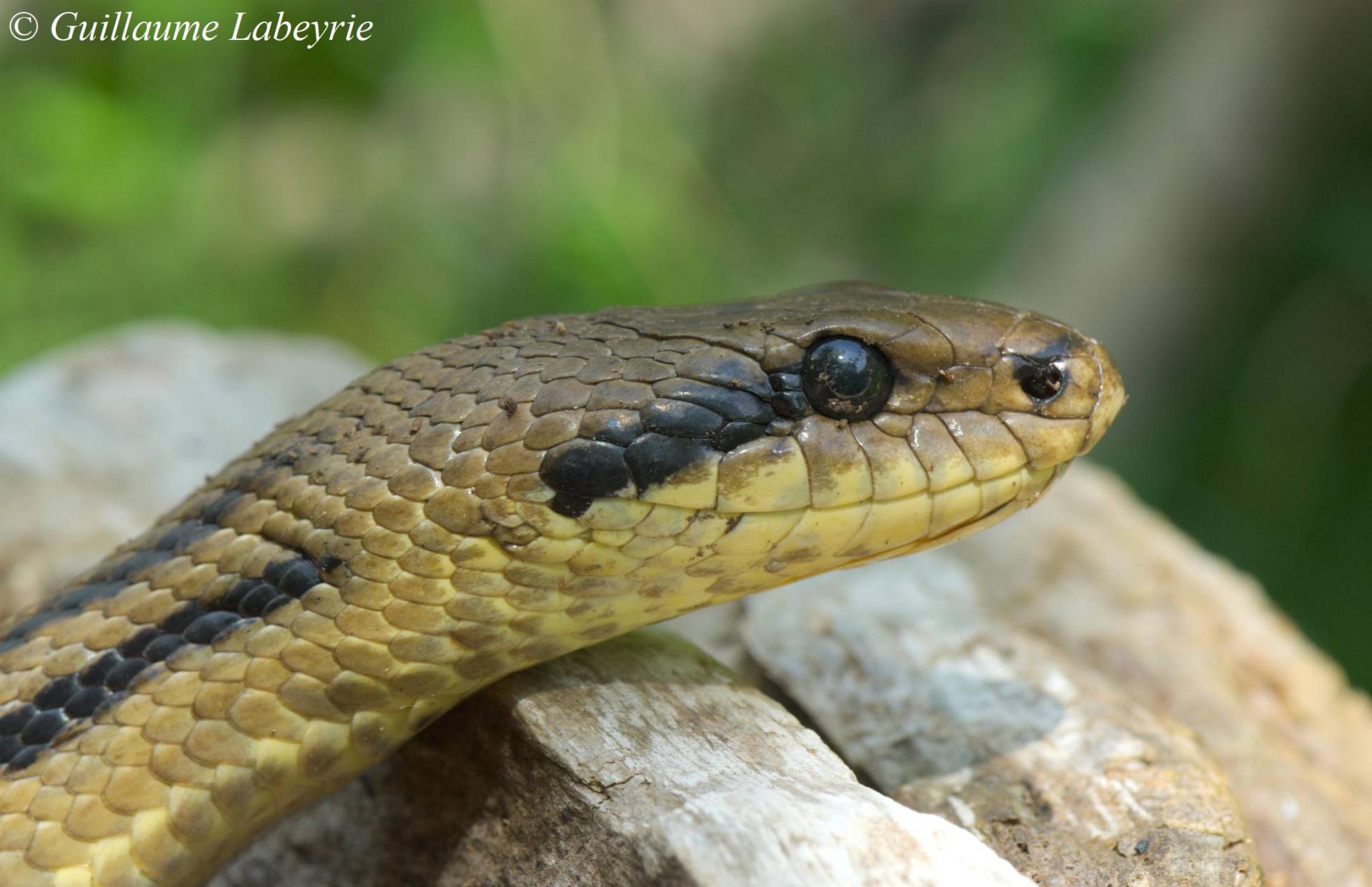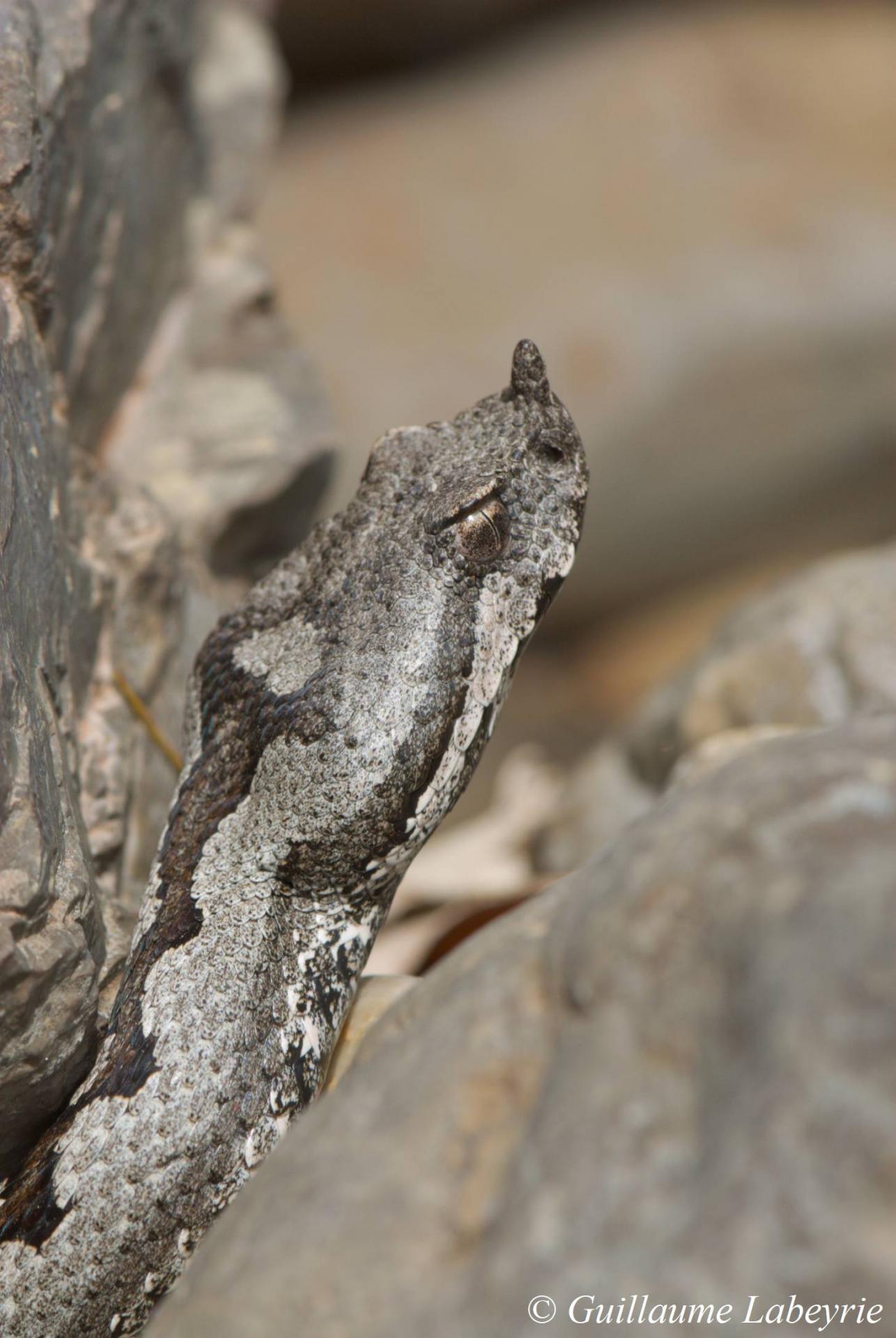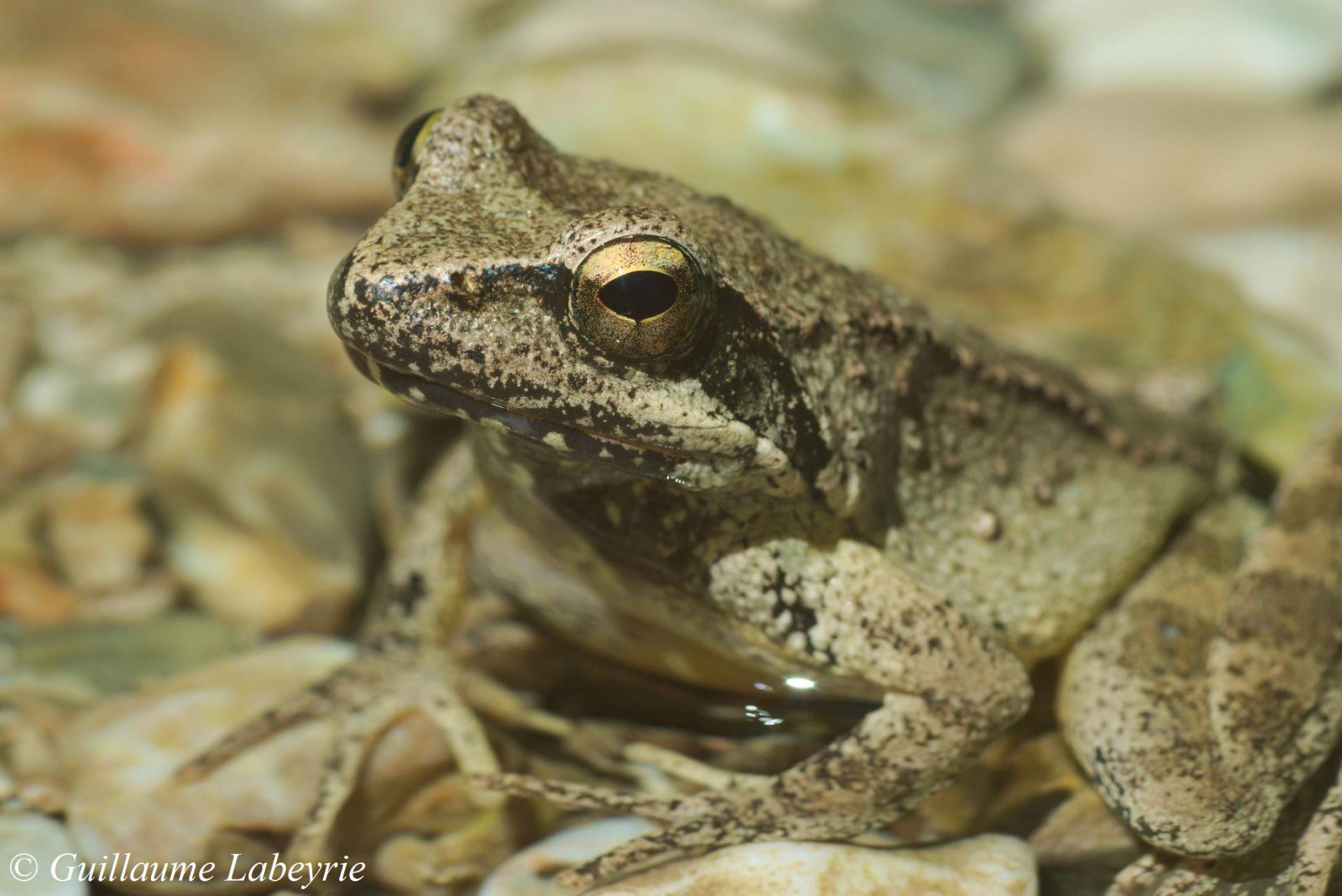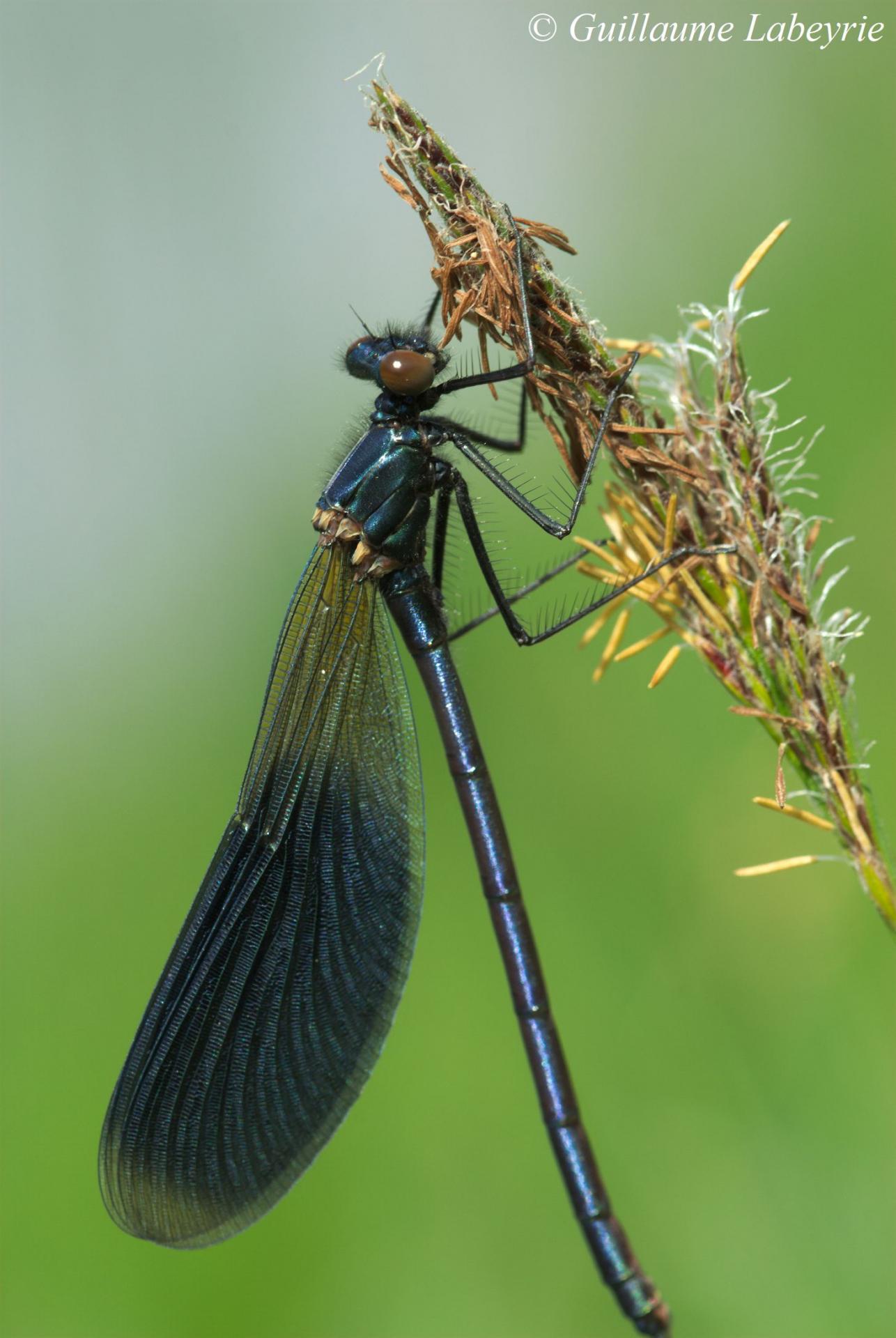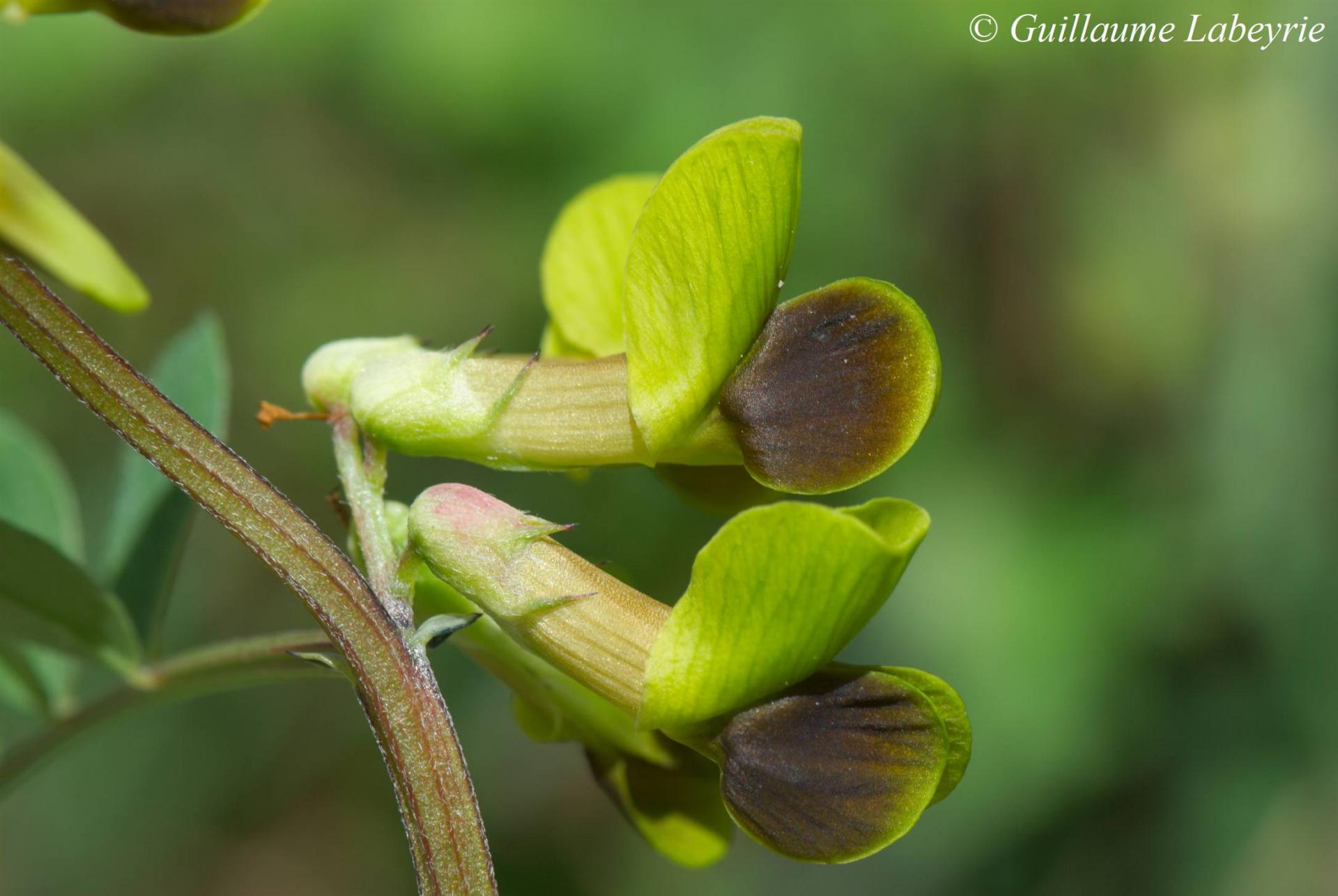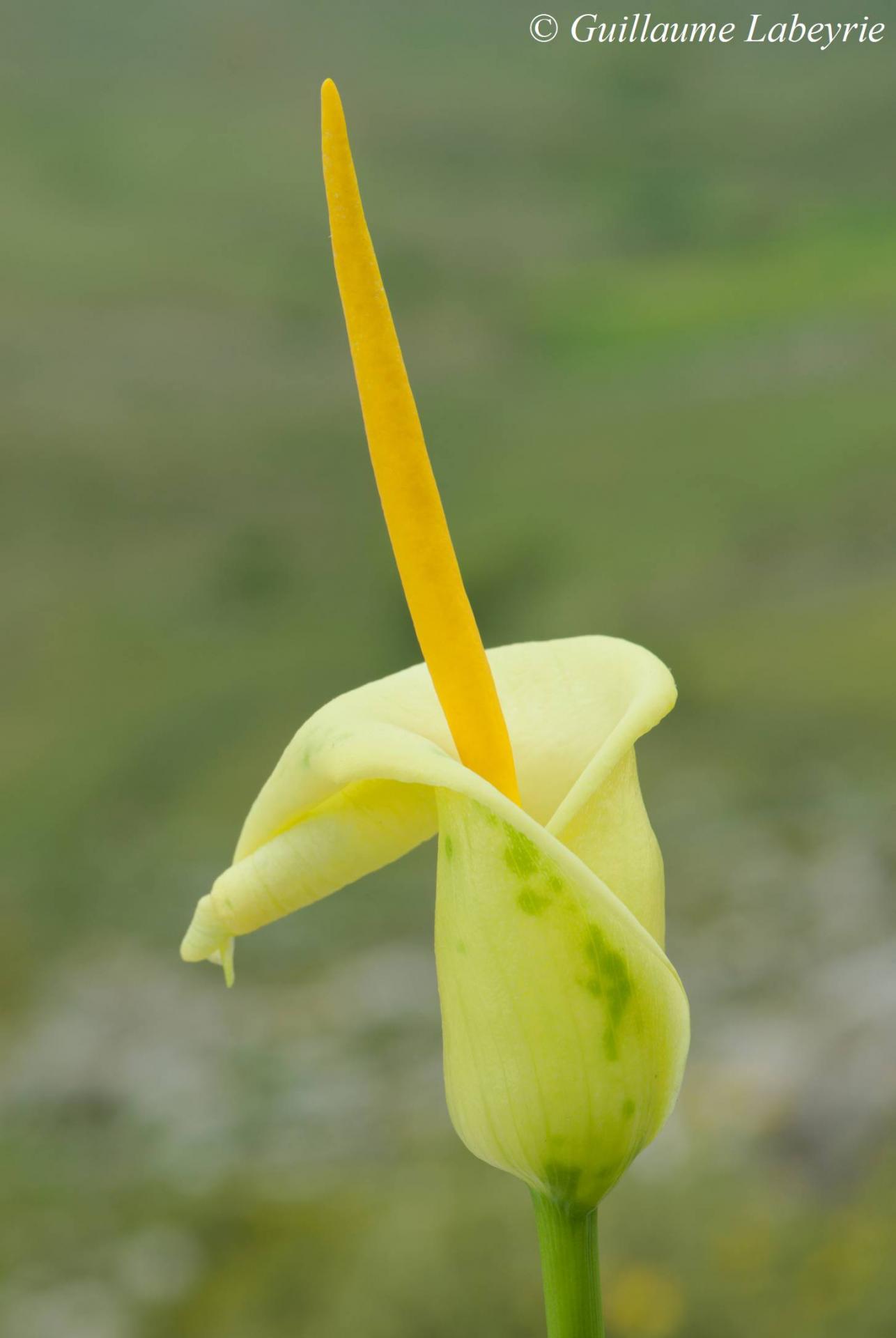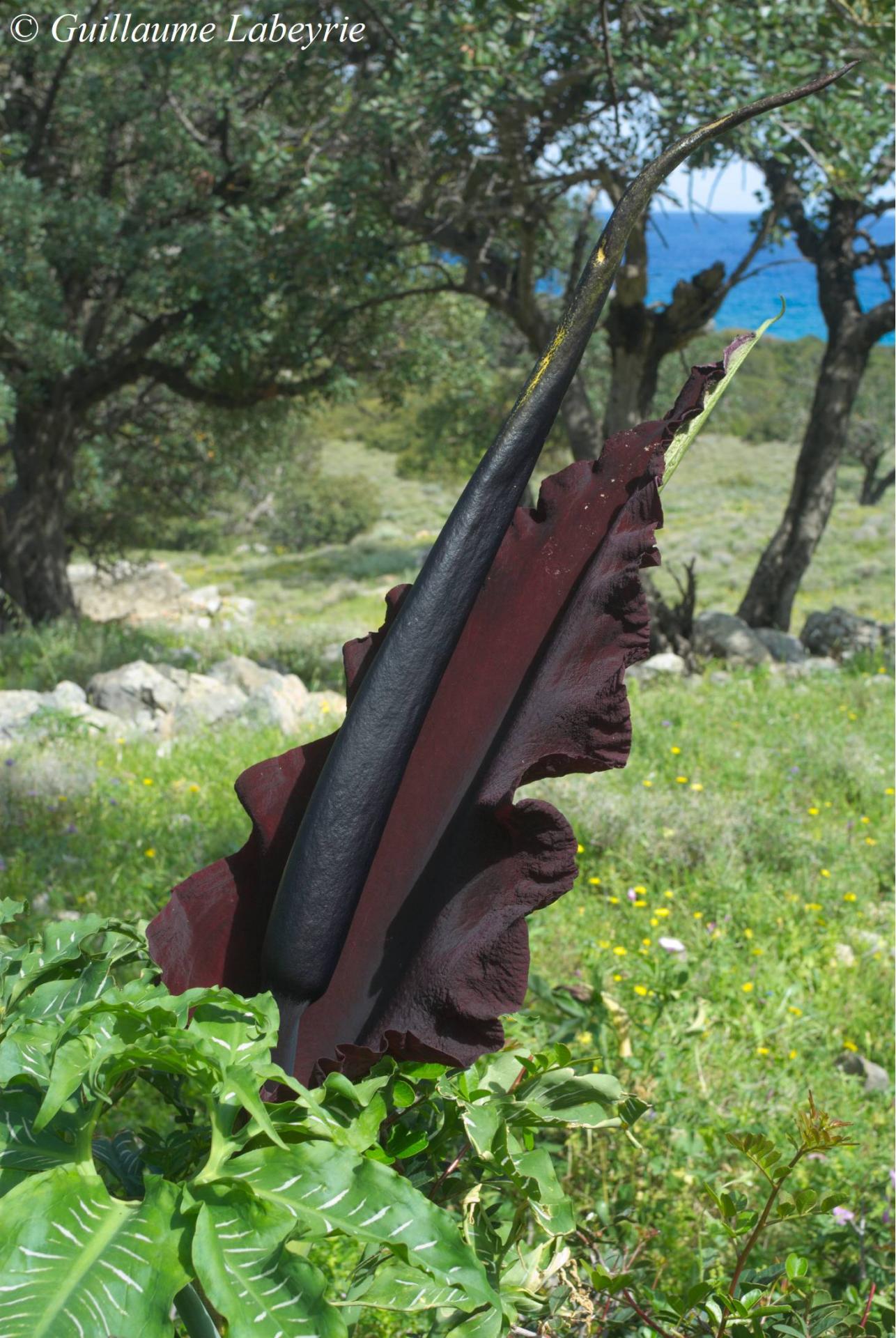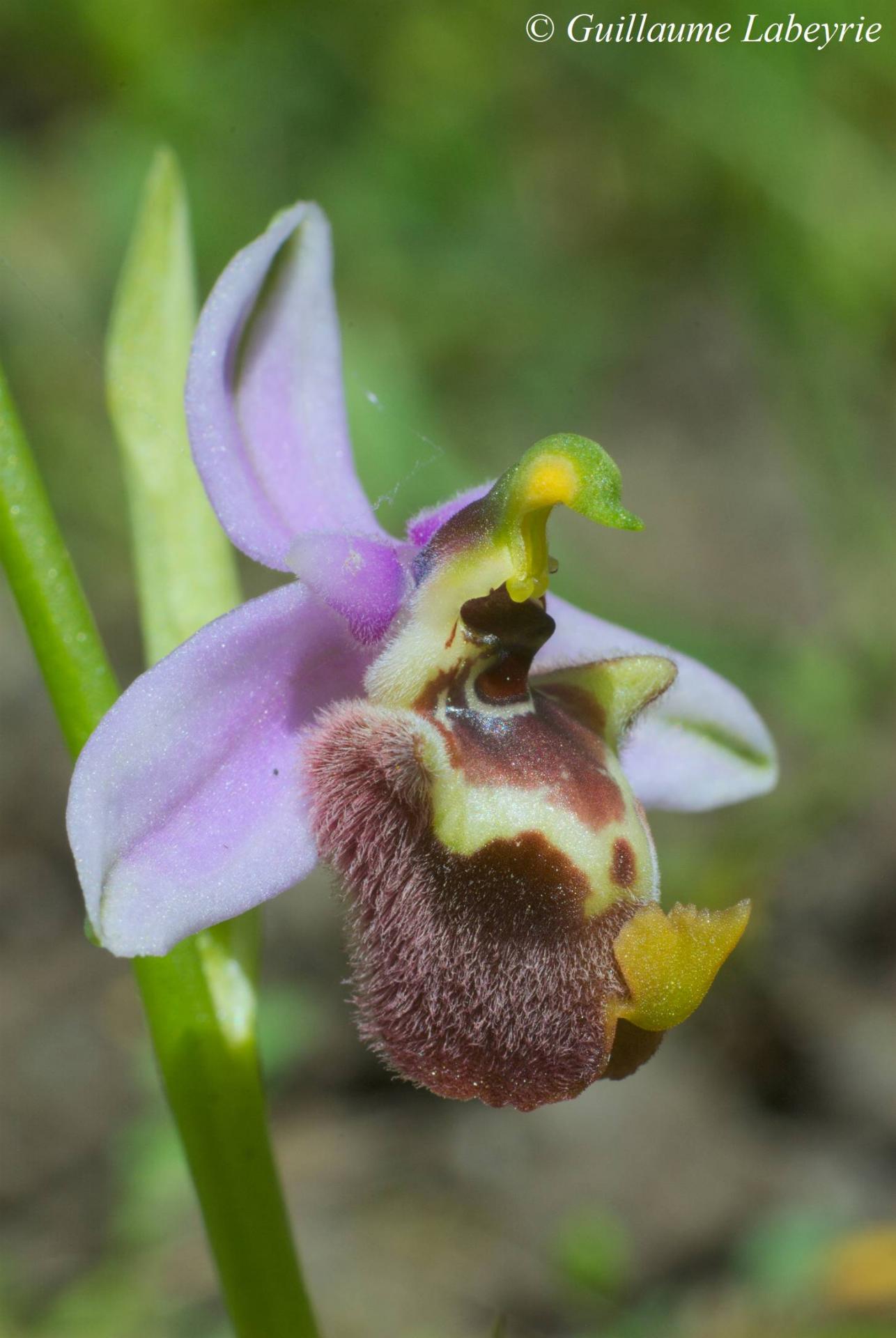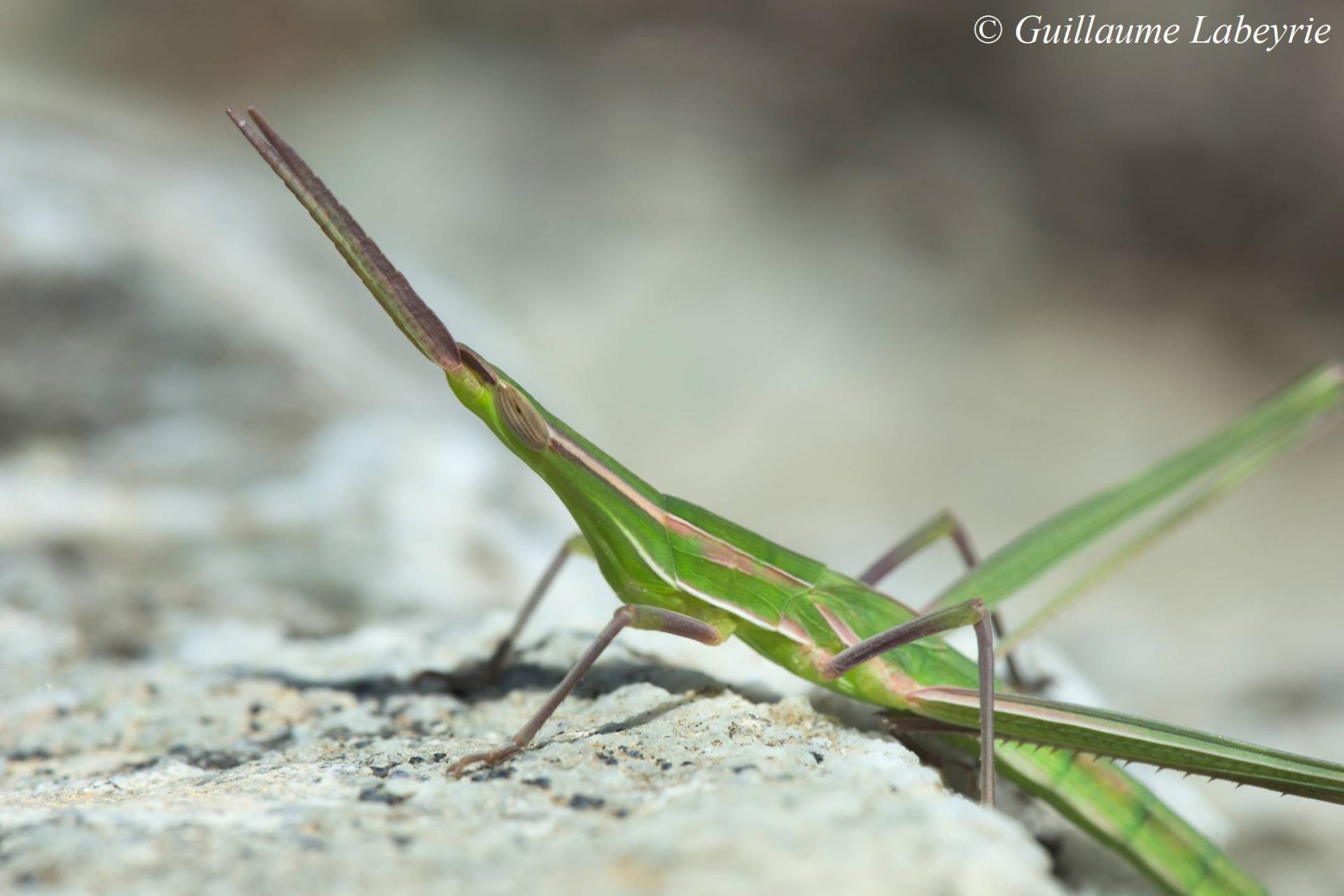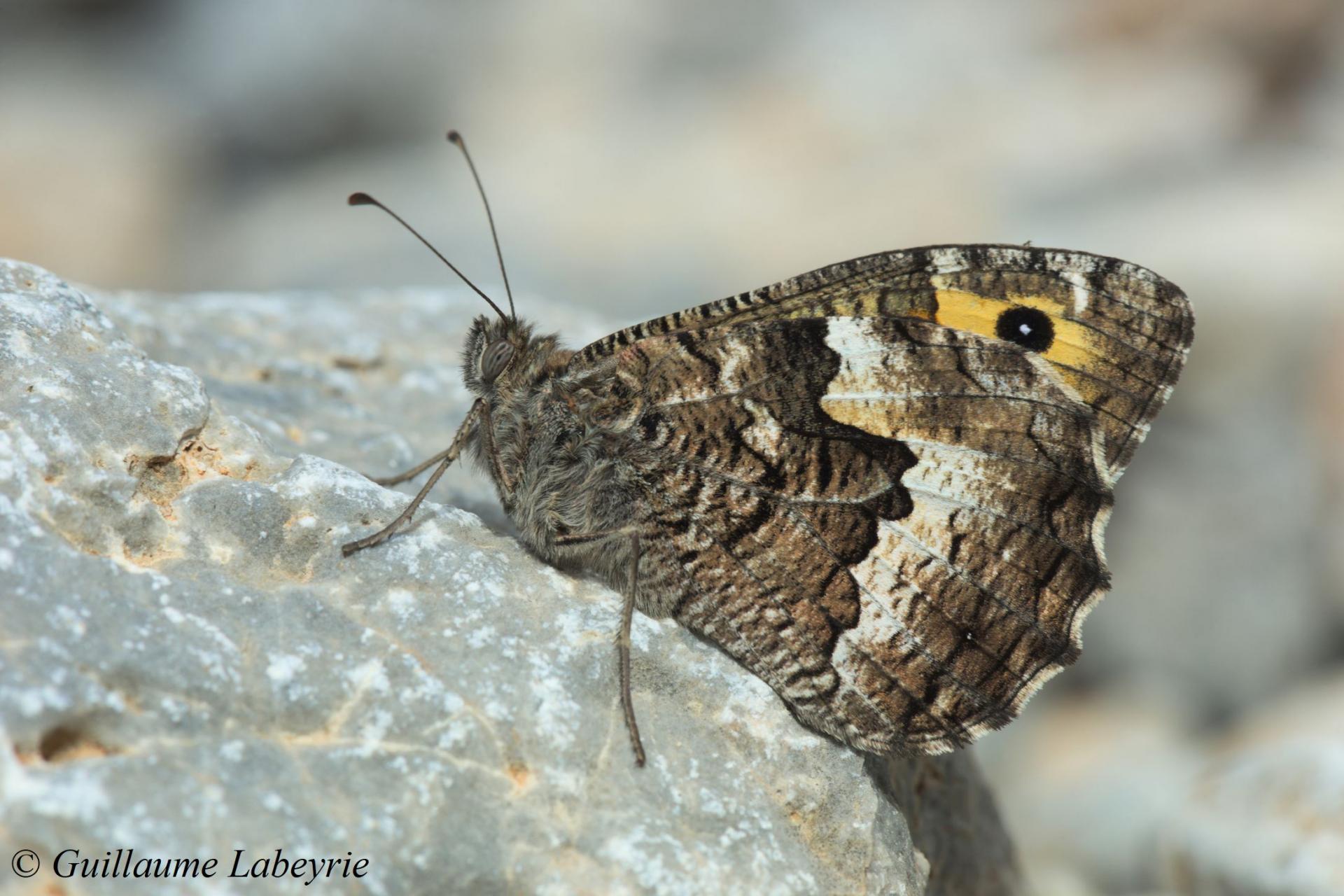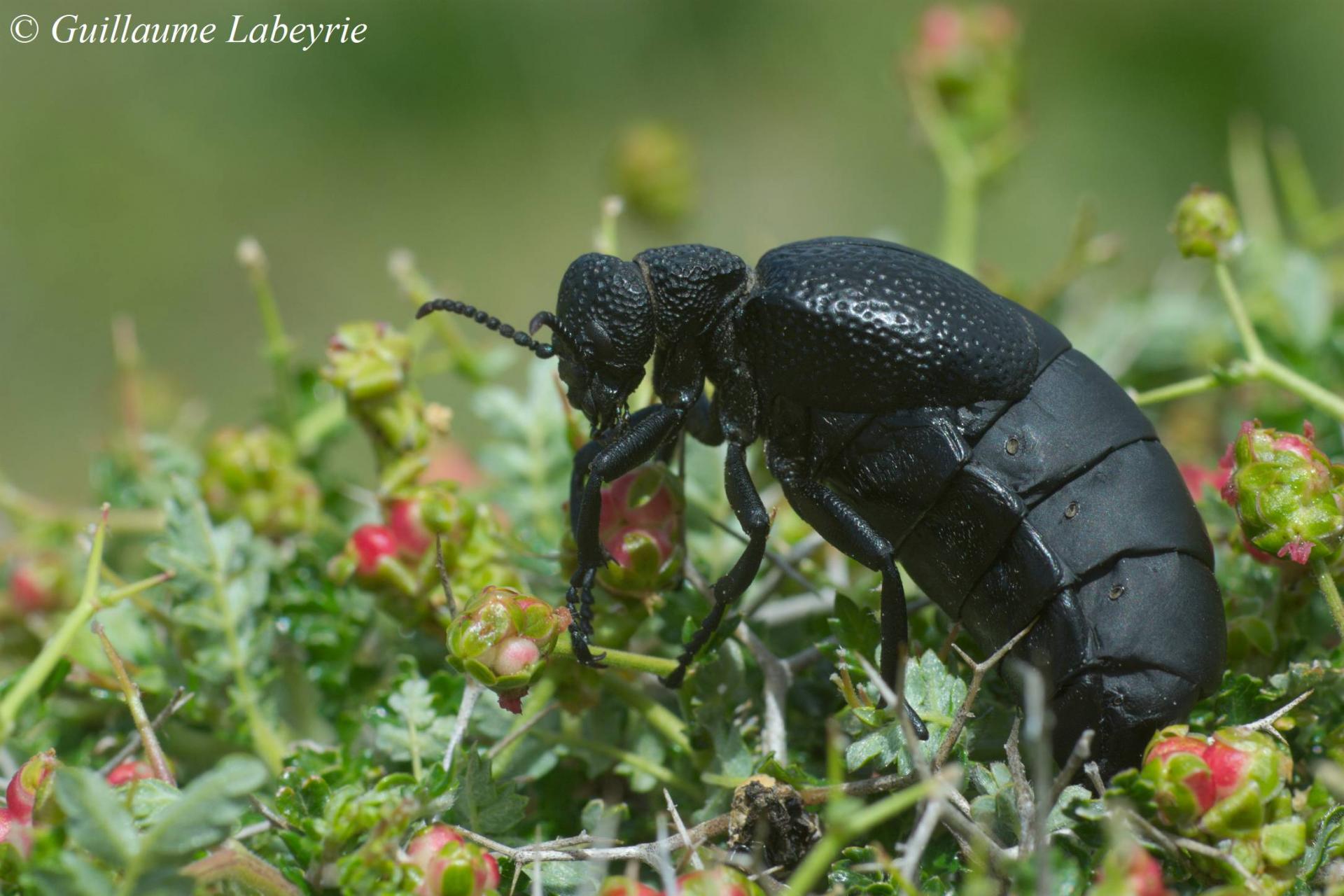Nature in the Balkans
The Balkans extend from Slovenia to the European part of Turkey. This vast region harbors many natural treasures, with a unique fauna and flora. This section deals with the Dalmatian coast (Croatia and Montenegro) and Crete.
Extending over 350 km along the Adriatic Sea, Dalmatia includes the littoral regions of Croatia and Montenegro. It is a contrasted region, where the coast and its numerous islands are dominated by the crests of the Dinaric Alps. It is home to a rich and original nature, unfortunately threatened in numerous places by pollution and a fast urbanization (Montenegro).
The Rumija range (Montenegro). Peaking at 1500 m over the city of Bar, this calcareous massif separates the southeast coast of Montenegro from the lake Skadar, located further north. This region is very rich in reptiles and amphibians.

Lake Skadar (Montenegro). This huge lake, split between Montenegro and Albania, is the biggest stretch of freshwater of the Balkans. It is a site of European importance for the reproduction of numerous species of birds, including the threatened Dalmatian pelican (Pelecanus crispus). It also shelters many species of fishes, including several endemics. Protected by a status of National Park in Montenegro, this lake is unfortunately polluted by a lot of waste.
Krupa canyon (Croatia). This beautiful river with unpolluted waters snakes through a dry plateau located on the southern slopes of the Velebit range. The area is a paradise for reptiles.
Fauna
Reptiles
Dalmatia is a paradise for reptiles, whith many species and unusually high densities. The pictures below illustrate this diversity.
Family: Lacertidae
The sharp-snouted rock lizard (Dalmatolacerta oxycephala). This lizard is found only in a restricted range, in the south of Croatia, Bosnia and Herzegovina, and Montenegro. During the mating season, the males display a blue color on the throat and at the base of the tail.
The blue-throated keeled lizard (Algyroides nigropunctatus). This lizard is found from northeastern Italy to northwestern Greece. During the mating season, the males display bright colors, with a deep blue throat contrasting with reddish flanks.
The Dalmatian wall lizard (Podarcis melisellensis). This lizard is found on the Dalmatian coast, from northeastern Italy to Albania. Males during the mating period are brightly colored, as can be seen from this photo. On the island of Cres (Croatia) where this photo was taken, these lizard are often carrying ticks (see below).
The Dalmatian wall lizard. This photo shows another typical coloration pattern, common on the Croatian coast along the Velebit range.
The European green lizard (Lacerta viridis). The males of this species often boast a blue throat in spring, which allows to separate them from the Balkan green lizard (Lacerta trilineata), also occuring in the area. Lacerta viridis is found in eastern Europe, from Germany to Turkey and Ukraine. It is replaced in western Europe (including France) by the western green lizard (Lacerta bilineata), whose adult is almost indistinguishable. The juvenile L. bilineata has two distinctive white lines on the back (L. trilineata has three, L. viridis usually has none).
Family: Gekkonidae
The Mediterranean house gecko (Hemidactylus turcicus). This gecko is found around the Mediterranean. Rare in France, it is more common in the east where it is often found inside houses.
Family: Anguidae
The scheltopusik (Pseudopus apodus). This impressive glass lizard reaches a length well over the meter. It is quite common in the dry bushes of the karstic regions of Dalmatia. It is found from Croatia to Turkey and south Russia, up to Jordan and Afghanistan.
Family: Colubridae
The four-lined snake (Elaphe quatuorlineata). This is the largest European snake, growing well over two meters. Very impressive, it is nonetheless perfectly harmless. The body is uniformly brown with four dark lines running along the back. This species is found in Italy, Dalmatia and Greece. It is listed as ''near-threatened'' by IUCN.
The Balkan whip snake (Herophis gemonensis). This medium-sized snake has a typical color pattern, uniform on the lower part of the body ans spotted on the upper part. Its is found from northeastern Italy to Greece.
The leopard snake (Zamenis situla). This is one of the most beautiful snake in Europe, with large mahogany spots surrounded by a black margin. Rather small, this colubrid snake moves slowly. A declining Mediterranean species, it occurs from souther Italy to Turkey, with isolated populations in Ukraine.
Dahl's whip snake (Platyceps najadum). This long and thin snake has a typical color pattern, brown for most of the body except the for the upper part near the head which is gray. The rather rare snake is found from Croatia to Iran and the Caucasus.
Family: Viperidae
The horned viper (Vipera ammodytes). This species is supposed to be the most dangerous snake in Europe, mainly because of the large amount of venom injected during the bite. A stocky snake, the horned viper gets it name from the distinctive "horn" on the tip of its snout. This species occurs from northeastern Italy to Turkey.
Family: Testudinidae
Juvenile oriental Hermann's tortoise (Testudo hermanni subsp. boettgeri). This subspecies replaces the occidental T. hermanni subsp. hermanni in Dalmatia and Greece. This very young individual is only a few centimeters long. As a species, Hermann's tortoise is listed as ''near threatened'' by IUCN.
Amphibians
Family: Bombinatoridae
The yellow-bellied toad (Bombina variegata). This small toad with a flattened body is found throughout Europe, where it is uncommon and declining. When disturbed, it bends its body to show its brightly colored underside.
Family: Ranidae
The Greek stream frog (Rana graeca). This frog is found in rivers and streams. It is endemic to the Balkans.
The Albanian water frog (Pelophylax shqipericus). This frog has a restricted distribution, from western Albania to southern Montenegro. Because of threats including pollution, loss of habitat and harvesting, this species is listed by the IUCN as "endangered".
Butterflies (Lepidoptera)
Family: Papilionidae
The southern festoon (Zerynthia polyxena). This beautiful butterfly occurs in southern Europe, from France to Turkey and the Ural. This orange-tinted form is often found in the Balkans.
The southern festoon (Zerynthia polyxena).
Dragonflies (Odonata)
Family: Calopterygidae
Calopteryx balcanica. This nice damselfly has bicolored wings and a metallic-tinted purple body. It is found along the pure streams of the Balkans. This species with a restricted distribution is often considered a subspecies of the banded demoiselle (Calopteryx splendens).
Flora
The species shown here are grouped by families, presented by alphabetic order. The definition of families follows the APG IV classification of flowering plants (2016).
Family: Asparagaceae
The Dalmatian scilla (Scilla litardierei). This nice plant grows in wet meadows. In the wild it is a rare species, with a restricted range: Slovenia, Croatia, Bosnia and Herzegovina and Montenegro. It is also increasingly grown in gardens throughout Europe.
Family: Asteraceae
Centaurea ragusina subsp. lungensis. This centaury with large yellow flowers is found only in the maritime cliffs of the island of Dugi Otok (Kornati archipelago, Croatia). The plant forms bushes with striking white whooly leaves.
Family: Euphorbiaceae
Euphorbia fragifera. This small bushy spurge appreciates dry calcareous rocky areas. Its fruits are densely covered with reddish outgrowths. This species is found in the Balkans and Italy.
The myrtle spurge (Euphorbia myrsinites). This spurge sports distinctive sprawling stems covered with fleshy blue-green leaves arranged in spirals. It can be found in beaches and rocky grounds. In the wild, the myrtle spurge occurs from Italy to Turkey, but it is also widely cultivated.
Family: Iridaceae
Illyrian iris (Iris illyricum). This nice iris grows in rocky limestone slopes and cliffs. In ancient Greece and Rome, this plant was widely used in perfumery and medicine. It is found from Croatia to Macedonia.
Family: Fabaceae
The black-eyed vetch (Vicia melanops). This vetch boasts contrasted flowers with a greenish banner and black wings. It is usually found in dry areas. This is a species from Southern Europe, found from Spain to Turkey.
Family: Geraniaceae
The bigroot geranium (Geranium macrorrhizum). This nice member of the Geraniaceae family has distinctive long stamens hanging outside of the corolla. It grows in cracks of calcareous rocks, in the shade. In the wild, the bigroot geranium occurs from southeastern France (Alpes-Maritimes) to the Balkans. It is also commonly grown in gardens.
Family: Liliaceae
The yellow asphodel (Asphodeline lutea). This nice plant is easily identified by its flowering spikes reaching 1 m, bearing yellow flowers with recurving stamens. It is found in North Africa and in the east of the Mediterranean basin up to Italy.
Fritillaria messanensis subsp. gracilis. This fritillary with mottled orange brown-green flowers is endemic to the Dinaric Alps. It is found in Croatia, Montenegro and in the north of Albania.
Family: Orchidaceae
The horned ophrys (Ophrys oestrifera). This orchid is distinguished by the long ''horns'' protruding from the labellum. It is distributed from the Balkans to Turkey. It is one of the most common Ophrys species in Montenegro.
Family: Scrophulariaceae
The purple mullein (Verbascum phoeniceum). This beautiful species is readily identified by its striking violet flowers, unique in the genus Verbascum in Europe. This plant occurs in Italy, the Balkans and Turkey. It is widely grown in gardens.
Family: Trapaceae
Fruits of the water chestnut (Trapa natans subsp. scutariensis). These strange fruits, known as "sea devils", are produced by the water chestnut, an aquatic plant of vast world distribution, and contain edibles seeds. The shores of the Skadar Lake (Montenegro) are covered with the fruits of the local subspecies scutariensis.
Crete
This large wild and mountainous island boasts beautiful landscapes, with in particular many spectacular canyons. It harbors a rich and original flora with many endemic species, unfortunately submitted to a high pressure due to overgrazing by goats which are found everywhere in the island.
The bay of Lissos. Located on the south-western coast near the small village of Sougia, Lissos is both an important archeological site and a remarkable natural area.
The Samaria gorge. This wonderful gorge is the most visited natural area in Crete. This huge ravine descending from the White Mountains to the sea over a length of 13 km is a major shelter for the fauna and flora, including the Turkish pine (Pinus brutia) shown here. The gorge and its surroundings are protected by a National Park.
The Gious Kambos plateau. This plateau, located at an altitude of 800 m above the small town of Spili in central Crete, harbors a rich flora including the Cretan red tulip (Tulipa doerfleri) and many orchid species.
Flora
Crete is famous for its flora, both varied and with many endemic species (about 10%). Orchids are particularly well represented, with approximately 70 species.
Family: Araceae
Arum idaeum. This nice white arum is endemic to Crete. It flowers in April-May, in shadowy areas in the mountains.
The Cretan arum (Arum creticum). This is another beautiful arum species from the mountains of Crete. The yellow tint of the spathe, which is often folded backwards, is distinctive. This plant occurs in Greece and Turkey.
The dragon Arum (Dracunculus vulgaris). This plant is one of the most spectacular in Europe. The plant can grow up to 1.5m tall, with flowers reaching 1 m. The fresh flowers (in April) emit a penetrating smell reminiscent of rotting meat, to attract flies that take part in the pollination process. In Crete this species is quite abundant, from sea level to low mountains. It is endemic to the Balkans, from Albania to Turkey.
Family: Boraginaceae
Onosma erecta. This comfrey is endemic to mountains of southern Greece and Eastern Aegean. It blooms in cliffs and rocks cracks in spring.
Procopiana cretica. This other comfrey displays flowers with an unusual star pattern. It grows in the shade, usually in canyons. It is endemic to Crete and Peloponnese.
Family: Campanulaceae
Campanula tubulata. This nice bellflower has hairy reddish stems, large purple flowers with calix showing some distinctive protuberances. Endemic to western Crete, it grows in cliffs.
Petromarula pinnata. This strange plant belongs to the bellflowers family. A Cretan endemic, it is rather common there and grows in rock cracks and cliffs. The leaves are edible (the Greek name Petromarula means "rock lettuce"). The beautiful flowering spikes can reach 1 m.
Solenopsis minuta. A member of the bellflowers family as well, this tiny plant is only a few centimeters high. This is an uncommon species, found in Crete at the bottom of certain canyons and on the shores of some lakes. A related species, Solenopsis laurentia, is also present. Solenopsis minuta is endemic to a few mediterranean islands: Crete, Sicily, Corsica and Sardinia.
Family: Capparaceae
The caper bush (Capparis spinosa). This plant forms shrubs that often hang in cliffs. The large flowers are short-lived and very attractive. The flowers buds, visible on this photo, are consumed as capers.
Family: Fabaceae
The Cretan silver bush (Ebenus cretica). This remarkable plant, endemic to Crete, forms silvery bushes that grow in maritime cliffs. It is also sometimes found inland, in sandy slopes. Flowering occurs in April-May.
Family: Liliaceae
The Cretan red tulip (Tulipa doerfleri). This tulip, one of the five species found on the island, has an extremely restricted range (the Gious Kambos plateau). It blooms in large populations in April, in fields and meadows.
Tulipa bakeri ( = Tulipa saxatilis subsp. bakeri). This other tulip has distinctive long stems and wide, soft bright green leaves. It blooms in April-May in mountainous grasslands. It is also a Cretan endemic with a restricted range (the Omalos plateau in the White Mountains).
Fritillaria messanensis. Fritillaries as recognizable by their mottled brown-green, bell-shaped flowers. Many species are found in the Mediterranean basin, including Fritillaria messanensis in the oriental part. In Crete, this plant is rather common in low mountains, in rocky slopes and meadows. Flowering occurs in April-May.
Family: Orchidaceae
Many visitors are attracted in Crete by the diversity of orchids, some of which are found only there. Most species bloom very early, in March and April.
The Cretan ophrys (Ophrys cretica subsp. ariadnae). This beautiful species displays distinctive contrasted flowers with a white macula on a dark labellum. This is a south-Egean endemic, local and quite uncommon.
Ophrys iricolor. This wonderful Ophrys has large flowers with an elongated hairy labellum and a large, bright blue macula. The underside of the labellum has a typical reddish color. This rare species occurs in the oriental Mediterranean range.

Ophrys phaidra. This species is characterized by a flat and long labellum divided by a long longitudinal groove. The macula is shiny. This orchid is endemic to Crete.
Ophrys episcopalis. This striking Ophrys with very large flowers occurs in the oriental part of the Mediterranean range. It is relatively common in Crete.
The white ophrys (Ophrys candica). This other Ophrys with large flowers is easily identified by its large macula with a broad whitish edge. The appendix of the labellum is large, recurved and divided. This is a rare and local plant, with a scattered distribution from southern Italy to south-western Anatolia.
Ophrys heldreichii. This species is only found in Greece. Quite similar to Ophrys scolopax, it usually has a large and triangular appendix. It is quite widespread in Crete.
Ophrys phryganae. This Ophrys has small flowers with a labellum bent at the base and a wide yellow edge. Ophrys sicula, a similar species also found in Crete, has a flat labellum. This species occurs in Greece.
Anacamptis collina. This beautiful and early species is easily recognizable by its colors, and by the short and broad spur. A Mediterranean species, this orchid is usually scarce (extinct in France). It is relatively common in Crete.
Bory's orchid (Anacamptis boryi). This orchid has a typical shape and coloration of the flowers, with almost no variations. It is endemic to southern Greece, local and quite rare.
The Cretan orchis (Orchis sitiaca). This Orchis is identified by its folded labellum and long straight spur. It is endemic to the mountains of Crete.
Serapias orientalis. This tongue orchid is identified by its large, pale flowers with a hairy labellum. This species is present mainly in Greece and Crete, although its exact distribution is not very well known.
Cephalanthera cucullata. This is probably the rarest of Cretan orchids, found only in three mountainous locations with a total population of a few hundred plants. It grows in the shade, in mixed forests of oak and cypress. The short spur and the ''hooded'' shape of the leaves are distinctive.
Family: Paeoniaceae
The Cretan peony (Paeonia clusii). This amazing white peony is endemic to Crete. Scarce and with a short flowering period (in April), it is typically found in mountain gorges.
Family: Ranunculaceae
The lice-bane (Delphinium staphisagria). This tall, toxic plant was used in the past to eliminate lice. In Crete, this toxicity protects the plant against grazing by goats. This species, very rare and protected in France, is found in the Mediterranean Basin from Portugal to Greece, in Africa and Asia Minor.
Family: Rosaceae
The thorny burnet (Sarcopoterium spinosum). This plant is one of the distinctive species of the phrygana, a typical bush formation of the dry and overgrazed places in Crete. The thorny burnet occurs in the eastern mediterranean range.
Family: Thymelaeaceae
Daphne sericea. This plant growing in rocky low mountains forms hemispherical shrubs densely covered with sweetly-scented flowers. The form from southern Greece has the particularity that older flowers turn yellowish, as seen on this photo. This species is found from Italy to Turkey.
Fauna
Fauna in Crete is much more inconspicuous than flora, with the noticeable exception of birds (and goats !) which are numerous in spring. Insects, reptiles and amphibians are scarce (at least in spring). Surprises are however awaiting the watchful visitor.
Reptiles
Family: Lacertidae
The Cretan wall lizard (Podarcis cretensis). This lizard is endemic to Crete, and the only lizard species there apart from the Balkan green lizard (Lacerta trilineata, see below). It occurs in the western half of the island, where it is rather rare. The male shown on this photo is particularly colorful. This species with a restricted distribution is listed as "endangered" by IUCN.
The Balkan green lizard (Lacerta trilineata). This juvenile shows the three white lines typical of the species. This species only occurs in the Balkans.
Orthopterans
Family: Acrididae / Sub-Family: Acridinae
The slant-faced grasshopper (Truxalis nasuta). This stunning grasshopper of large size (up to 10 cm of body length) displays an elongated body and a conical head. The color is green or brown. The wings, visible in flight, are dark red. This species is often found in dry and sandy areas near freshwater. Another similar species, Acrida turrita, is also present in Crete (see below). It seems that adults found in Crete in spring (as this individual) belong to T. nasuta, since adults of A. turrita appear later in summer. Truxalis nasuta occurs in the south of the Mediterranean Basin, Middle East, Africa and India.
Slant-faced grasshopper.
Juvenile turret cone-headed grasshopper (Acrida turrita). As discussed above, only juveniles of this species are present in Crete in spring.
Family: Pamphagidae
Orchramus raulinii. This large (7 cm including antennae for this female), stocky grasshopper belongs to the Pamphagidae family. The male (see below) is much smaller. The genus Orchramus regroups a few species with restricted ranges in the Eastern Mediterranean. Ochramus raulinii is endemic to Crete, where it is found in rocky slopes and pine forests. This rare species is liste as "vulnerable" by IUCN.
Butterflies (Lepidoptera)
Family: Papilionidae
The Cretan festoon (Zerynthia cretica). This butterfly is observed in spring in dry rocky valleys, from sea level to an altitude of at least 1500 m. The caterpillar feeds on several birthwort species, including Aristolochia cretica. This species is endemic to Crete. It is very close to Z. cerisy, whose distribution includes Bulgaria, Romania, Albania, Greece and Turkey, Israel and Lebanon.
Family: Nymphalidae / Sub-Family: Satyrinae
Coenonympha thyrsis. Several member of the genus Coenonympha are endemic to some mediterranean islands. Coenonympha thyrsis is only found in Crete, where it is relatively common.
Hipparchia cretica. The genus Hipparchia counts many species in the Mediterranean basin. Hipparchia cretica is endemic to Crete, where it is found in dry and rocky areas.
Beetles (Coleoptera)
Family: Meloidae
Oil beetle (Meloe tuccius). Oil beetles are rather large insectes with a soft abdomen, that can release toxic droplets from their joints when disturbed. This individual is photographed on a bush of thorny burnet (Sarcopoterium spinosum), an essential component of the Cretan "phrygana" vegetation. Meloe tuccius occurs in the Mediterranean basin.
Family: Buprestidae
Julotis pubescens subsp. ivenii. This large member of the Buprestidae family displays distinctive longitudinal grooves on the elytra, and a rather unusual green pilosity. It is endemic to Crete.
Crustaceans
Family: Potamidae
Hippocrate's freshwater crab (Potamon hippocratis). Five species of freshwater crabs occur in the East of the Mediterranean Bassin. Potamon hippocratis is restricted to Crete and a few other Greek islands. It lives on the banks of rivers at low altitude. Mainly nocturnal and aquatic, it sometimes wanders far from the water like the individual on this photo.
Molluscs (Mollusca)
Family: Clausiliidae
Albinaria sphakiota. These small terrestrial molluscs sometimes gather in large numbers on the cliffs of canyons. This species is endemic to Crete, with a very restricted range including in a few canyons on the southern slopes of the White Mountains. It is listed as "vulnerable" by IUCN.









